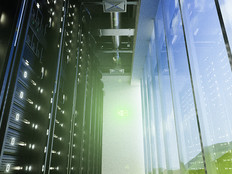Next-Generation Tech Gets Agencies Ready for Enterprise
There’s a sense of déjà vu among many IT professionals as agencies move to enterprise data centers after decades of relying on distributed systems.
“It’s like we’re going back to the mainframe mentality, with lots of systems in one big box,” says Cindy Cassil, the State Department’s director of systems integration.
While the concept is similar — centralizing IT operations and serving computing power to distributed users — the technology being implemented by modern consolidators such as State, the Census Bureau and the Interior Department is light-years beyond the mainframe era. Agencies are deploying virtualized blade servers with centralized storage, supported by high-speed networking infrastructure. “If there’s one key best practice for developing an enterprise data center, it's virtualization,” Cassil says.
Planning is critical to maximizing such high-tech deployments, says Jason Schafer, research manager with 451 Research. “Plan, plan, plan,” he emphasizes. “IT infrastructure requirements, application architecture and latency restrictions are just some of the areas where planning is key to success.”
State did just that in 2005, when its decades-old facilities started hitting their capacity limits, and sprawling distributed IT systems consumed a total of 77,000 square feet.
“Internal surveys showed we would need only 12,000 square feet if we were consolidated onto modern infrastructure,” Cassil says.
The department developed a five-year plan to implement two Tier-3 data centers on the East and West Coast power grids.
Putting Plans into Action
For the first data center, State leased a facility in Virginia. For the second, it obtained an American Recovery and Reinvestment Act grant to build a department-owned facility in the metro Denver area.
“Essentially, we were standing up two data centers at the same time,” Cassil says. “But we planned the Western data center in two pods, which we’re building out one at a time to enable installation of the latest infrastructure in each pod.”
Simultaneously building out the data centers permitted State to standardize on strategies and technologies, including a Cisco-enabled 10 Gig-E networking infrastructure with Nexus switches — a quantum improvement over the old network’s OC-12.
For computing gear, State selected HP blade servers, virtualized with VMware, and NetApp storage area networking (SAN) with advanced features, such as tiered storage to ensure that less active data is automatically moved to more cost-effective disks.
The department also invested in robust remote-management tools, which are essential for customer access, Cassil says.
Having two geographically distant sites provides the department with flexibility in its continuity of operations and disaster recovery strategies.
Building a Private Cloud
The estimated savings achieved by the State Department by consolidating down to two enterprise data centers and using former server room space to house offices for its business units
Source: State Department
At the Census Bureau, transitioning to an enterprise data center in Maryland is enabling construction of a virtualized private cloud that offers infrastructure as a service (IaaS) to other agencies within the Department of Commerce.
“We’ve built a dense computing environment based on IBM blade infrastructure,” says Brian McGrath, CIO at Census. “And, we now have just under 900 VMware guests.”
Census also rationalized its storage systems, moving from 52 different storage arrays down to seven — and from nine storage vendors to one — thereby reducing complexity. “Consequently, we estimate we’ll save $40 million over four years,” McGrath says.
Additionally, the agency is upgrading its network to 10 Gig-E and deploying other enterprise strategies, such as a dual-homed firewall architecture and dual-powered equipment throughout. “The facility is highly redundant, including two power feeds with an independent uninterruptible power supply on each,” McGrath says.
To enhance management efficiency, operational performance and security effectiveness, Census deployed a suite of HP tools in combination with establishing configuration protocols and standards.
“Adoption of the server management tools and configuration standards reduces Microsoft and Linux server provisioning from weeks to a day,” says McGrath.
Taking a Regional Approach
The Department of the Interior is still working on its effort to consolidate its IT operations to enterprise data centers.
Currently, Interior maintains nearly 10,000 servers dispersed across the country. Most are in or near eight metropolitan areas, presenting an opportunity to establish enterprise data centers.
“We’re moving toward being a service-delivery IT organization, and we’re seeking to better understand the broad and varied requirements of our applications from an enterprisewide perspective,” says Bernard Mazer, Interior’s CIO and co-chairman of the federal CIO Council’s Federal Data Center Consolidation Task Force.
Like other agencies, DOI plans to rely heavily on virtualization. “We’re looking at many different types of technology for virtualizing servers, storage and desktops,” says Mazer.
DOI is considering 10 Gig-E for networking infrastructure. “We’ll make the appropriate types of bandwidth available for our applications,” Mazer affirms.
Regardless of final strategies, Mazer offers advice for others making the transition. “Don’t let the perfect be the enemy of the good,” he says. “Instead, move to a continuous-improvement methodology, remain flexible and remember that you can never overcommunicate.”







